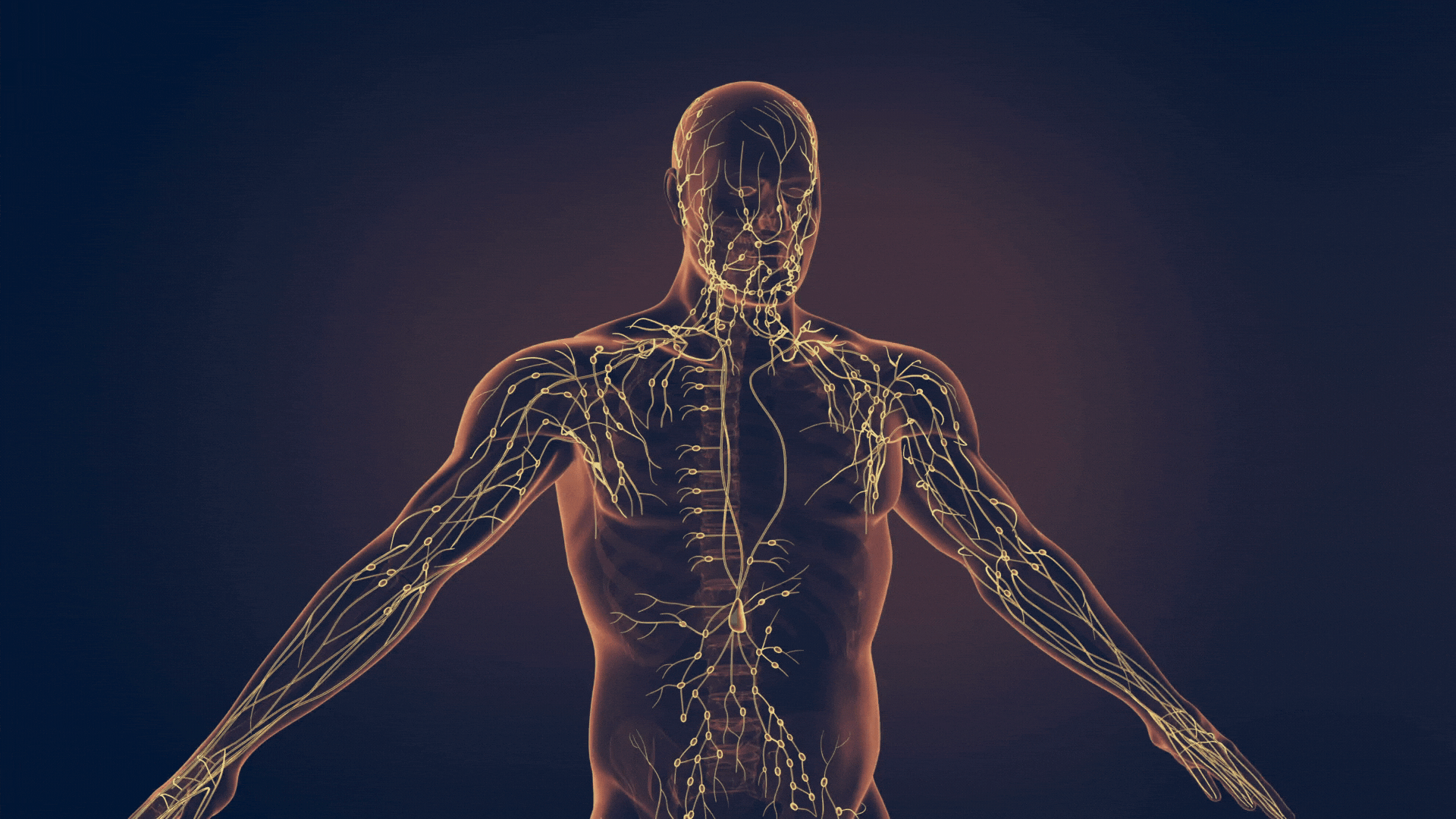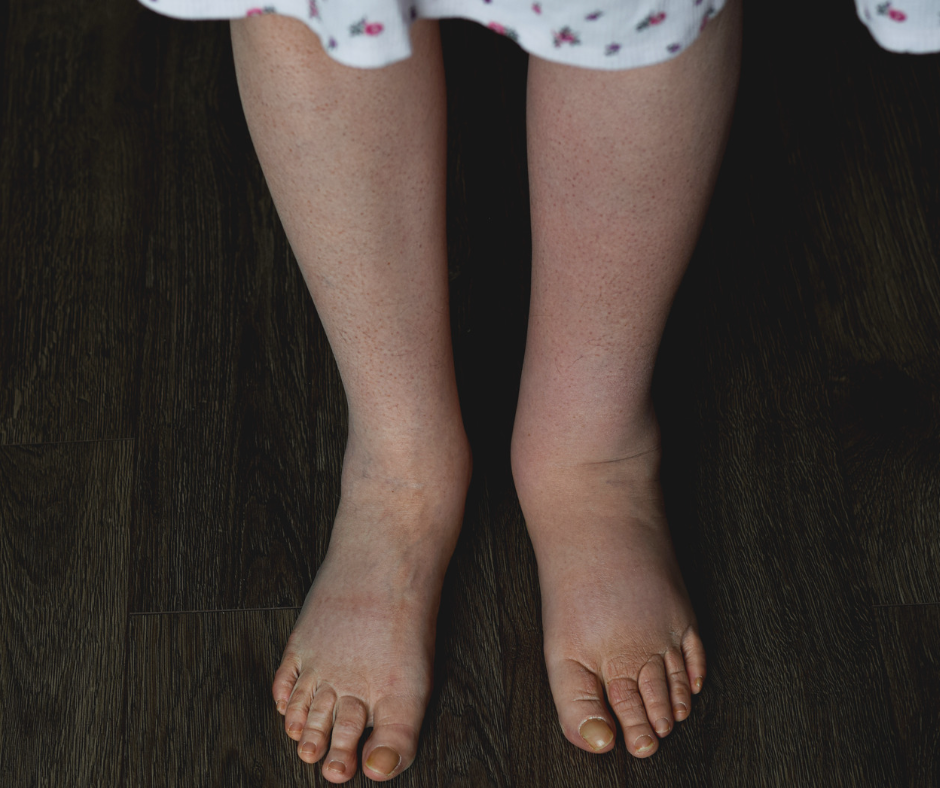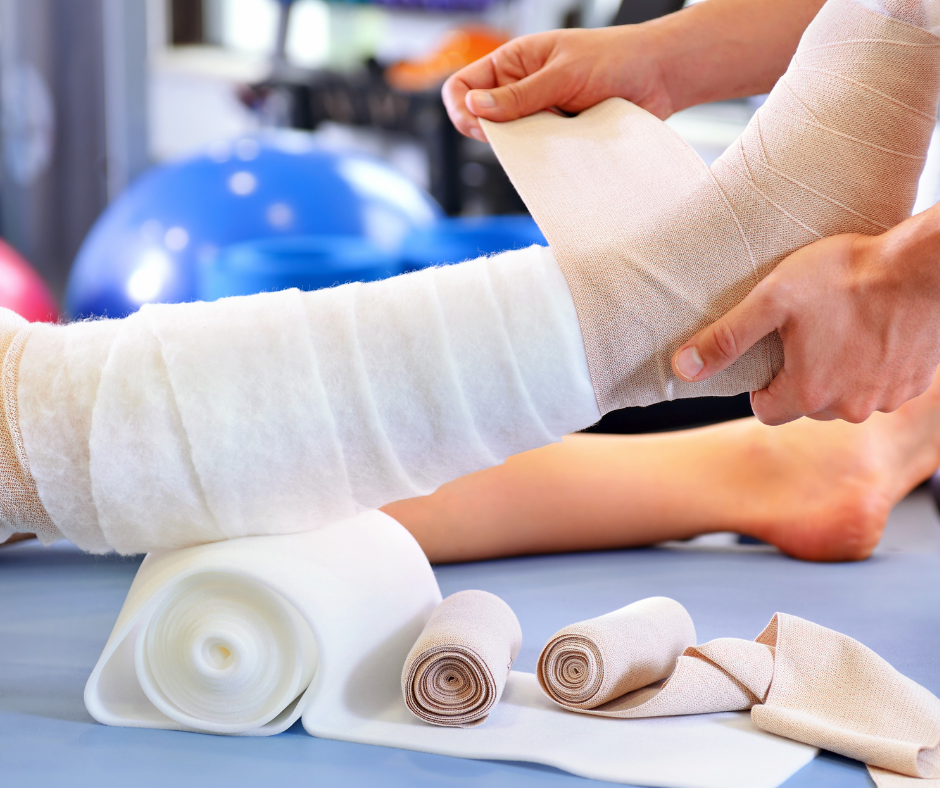This post is for informational purposes only and should not be considered medical advice. If you suspect that you may have lymphedema, please get in touch with your physician.
CONTENTS

Lymphatic System
The function of the lymphatic system is to defend the body against infection and disease. The system itself is composed of lymphatic organs and vessels. Lymphatic vessels are a part of the vascular system and are structured like a web, the lymphatic system removes fluid containing oxygen, glucose, amino acids, and other nutrients from tissues and brings it to the lymph nodes to be filtered. The lymph nodes filter out bacteria and other pathogens and return the fluid back into the bloodstream. Each person has hundreds of lymph nodes but the size and quantity are unique to each individual.

Lymphedema
Lymphedema is an incurable lymphatic disease that appears as swelling in one or more parts of the body. There are two types of lymphedema; primary and secondary. Primary lymphedema is genetic and often appears at birth or early childhood. Secondary lymphedema is a result of injury to the lymphatic system. Lymphedema often occurs after cancer treatment due to lymph node removal, radiation, and other localized treatment-related injuries.
Lymphedema occurs due to a buildup of protein-rich fluid under the skin in the subcutaneous interstitial compartment when lymph fluid is impeded from flowing through the lymph vessels or there is an excess of fluid that exceeds the carrying capacity of the lymphatic system. The lymphatic fluid collects in the subcutaneous and deep tissues and causes swelling and predisposes to chronic inflammation.
Lymphedema Staging
Lymphedema is a progressive chronic disease. Once a patient enters Stage 1 with the presence of visible swelling, it is not possible to return to Stage 0 and lymphedema must be managed so it does not get progressively worse and enter Stage 2 or 3. For patients at risk for secondary lymphedema, therapy focuses on risk-reduction to keep the patient at Stage 0.
Stage 0
No visible sign of lymphedema but the patient is at-risk for swelling. A compression garment may be used during at-risk activities.
Stage 1
Swelling that may come and go spontaneously. Elevation of the affected area may reduce swelling temporary. When skin is pressed, the indentation remains (pitting).
Stage 2
Swelling that is always present. Elevation of the affected area does not reduce swelling. When skin is pressed, the indentation does not remain (no pitting).
Stage 3
Permanent extreme swelling, often with pain and recurrent infections. Requires intense treatment and on-going management.

Lymphedema Management
If you are at risk for lymphedema or have existing swelling it is important to establish a relationship with a certified lymphatic therapist. The Lymphology Association of North America (LANA) provides a standard of certification for lymphedema care for healthcare practitioners. You may find a LANA Certified Lymphedema Therapist (CLT) on their website: clt-lana.org.
If you are at risk for secondary lymphedema, your therapist will work with you to establish baseline measurements, if they were not taken at a prior point. They may take physical measurements or use a bioimpedance device to track changes in the extracellular fluid which can help identify and diagnose lymphedema sooner. The therapist may also go over risk reduction practices and schedule regular intervals to continue monitoring the affected area for signs of swelling. At this point, the goal of lymphedema therapy is to reduce the chance of swelling and to identify any swelling as early as possible.
The standard for lymphedema therapy for when there is a presence of swelling is called Complete Decongestive Therapy (CDT). Since the lymphatic system and any impairment to it is unique to each patient, CDT will vary from patient to patient, including the rigor of therapy and the techniques used. CDT often includes Manual Lymphatic Drainage (MLD) massage, wrapping in bandages, compression garment wear, lymphatic breathing/exercises, and an introduction to a lymphedema self-care routine.
Lymphedema Risk After Cancer Treatment
When there is an injury to the lymphatic system during cancer treatment such as lymph node removal for dissection to determine cancer staging, radiation, or chemotherapy, there is a risk of lymphedema. The risk varies depending on how many lymph nodes are removed and any additional treatments performed. Unfortunately, there is no way to tell when lymphedema may occur after cancer treatment. Some patients present lymphedema during treatment or soon after, however, the risk of lymphedema remains for more than twenty-five years after treatment. Lymphedema will affect the limb or body part closest to the site of lymph node removal or radiation. For example, in breast cancer, lymphedema is often present in the upper limbs and trunk. In cervical cancer, lymphedema often presents itself in the lower limbs. If you are at risk, be sure to know the signs of lymphedema and consult your doctor if you experience any of them. With lymphatic disease, early intervention is very important to the quality of life after diagnosis.
If you are at risk for lymphedema or have existing swelling it is important to establish a relationship with a certified lymphatic therapist. The Lymphology Association of North America (LANA) provides a standard of certification for lymphedema care for healthcare practitioners. You may find a LANA Certified Lymphedema Therapist (CLT) on their website: clt-lana.org.
Signs of Lymphedema
- A full feeling in your arm
- A difference in size between the affected and non-affected arm
- Weakness in your arm or not being able to move it as far
- Pitting: when pressing the affected arm for twenty seconds, the impression of the fingers remain
Reducing Lymphedema Risk
Avoid Infection
Since lymphedema is an impairment of the lymphatic system which is part of the immune system, it is best to avoid infection to the at-risk area. Any break in the skin can introduce outside infection. Use an unaffected area for blood draws and shots. Keep your skin clean and protect it from cuts and scratches. If a break in the skin does occur be sure to clean the area, treat it with antibacterial ointment, and cover with a bandage.
Take extra care to avoid organic breaks in the skin. Protect yourself when performing activities that may result in injury such as gardening, playing sports, and hiking. Be sure to keep the skin of your affected area clean and moisturized.
Avoid Burns
Just like a cut, a burn elicits an immune response which can trigger lymphedema. Be sure to apply (and reapply) sunblock when spending time outdoors to avoid sunburn and exercise caution when cooking.
Reduce Exposure to Heat
There is a correlation between hot weather and increased swelling. If you’re at risk for lymphedema, exercise caution during the warmer months, try to take breaks to cool down if possible. Avoid extremely hot baths/showers, saunas and spas.
Avoid Constrictions
Any constriction against your skin can create a tourniquet that may impede lymphatic fluid drainage and can trigger lymphedema in your affected area. Be aware of possible sources of constriction such as tight jewelry, watches, restrictive clothing, and blood pressure cuffs, if your affected limb is your arm.
Maintain a Healthy Diet & Exercise Routine
Be sure to eat lots of nutritious foods such as fruit, vegetables, complex carbohydrates, and lean proteins. Drink water to thirst and try to cut back on salt when possible. It is safe to exercise when you’re at risk for lymphedema, studies suggest that wearing a compression garment when exercising can reduce the chances of swelling. When returning to exercise after cancer treatment, be sure to check with your doctor and/or therapist about the level of intensity that is right for you.
Research has shown a correlation between obesity and the development/progression of lymphedema. If you are obese, talk to your doctor to develop a diet and exercise program that works for you.
Take Precaution During Air Travel
The pressurized cabin of an airplane can cause or exacerbate swelling. It is advisable to wear a well-fitting compression sleeve with a gauntlet or glove before, during, and after air travel.
Lymphedema and Exercise
If you’re at risk for lymphedema or have lymphedema, it is important to remain active. Studies have shown that exercise, performed correctly and at the right intensity, can help improve lymphatic flow. When working with a therapist, they may recommend and demonstrate breathing and muscle pump exercises you can perform to help improve lymphatic function, these exercises should be performed while wearing a compression garment.
Cardiovascular and resistance training can be an important part of lymphedema self-care. You may work with your lymphedema therapist to develop a beneficial exercise routine. Exercise has proven to positively impact physical and mental health.

Lymphedema Compression Garments
Medical graduated compression garments are often a part of lymphedema therapy. Each medical graduated compression garment is assigned a compression class which determines how much pressure that garment delivers. For example, in the United States, Class 1 is defined as 20-30mmHg, which means that the garment delivers between 20 to 30 millimeters of mercury at the point of highest pressure in the garment. A Class 1, 20-30mmHg, arm sleeve would have between 20-30mmHg at the wrist and then the pressure would decrease gradually up the arm. The purpose of a compression garment is to provide pressure that is highest at the most distal point of the body and decreases toward the heart to aid in pumping lymph fluid toward the body. Pressure from the compression garments helps to circulate lymphatic fluid and reduces lymphatic fluid stagnation which can cause the onset of or advancement of lymphedema. Wearing a compression garment based on the advice of your therapist is an important part of a lymphedema management self-care regimen.
Lymphedema and Cellulitis
If you have lymphedema or are at risk for lymphedema it is important to be aware of an infection called cellulitis. It has been noted in medical literature that the incidence of cellulitis infection in limbs affected by lymphedema is higher than would be expected. An infection of this nature can be serious unless it is identified and addressed early on, so knowing the symptoms and when to see a medical professional is especially important.
Cellulitis is a bacterial infection of the deeper layers of the skin, typically, but not always, caused by Streptococcus or Staphylococcus bacteria. There is a dependent relationship between lymphedema and cellulitis. Cellulitis causes widespread lymphatic damage which can result in secondary lymphedema, and in turn the lymphedema leads to an increased risk and occurrence of cellulitis. There has been a recorded incidence of cellulitis recurring in as many as 47% of patients. This cycle often means that infections of this type can increase the severity of lymphedema and may result in a hospital stay.
Signs of cellulitis:
- Redness
- Localized warming
- Localized swelling
- Fever
- Chills
- Tenderness
- Pain
- Weeping of the area
If you think you may have cellulitis, please consult your physician as soon as possible.
